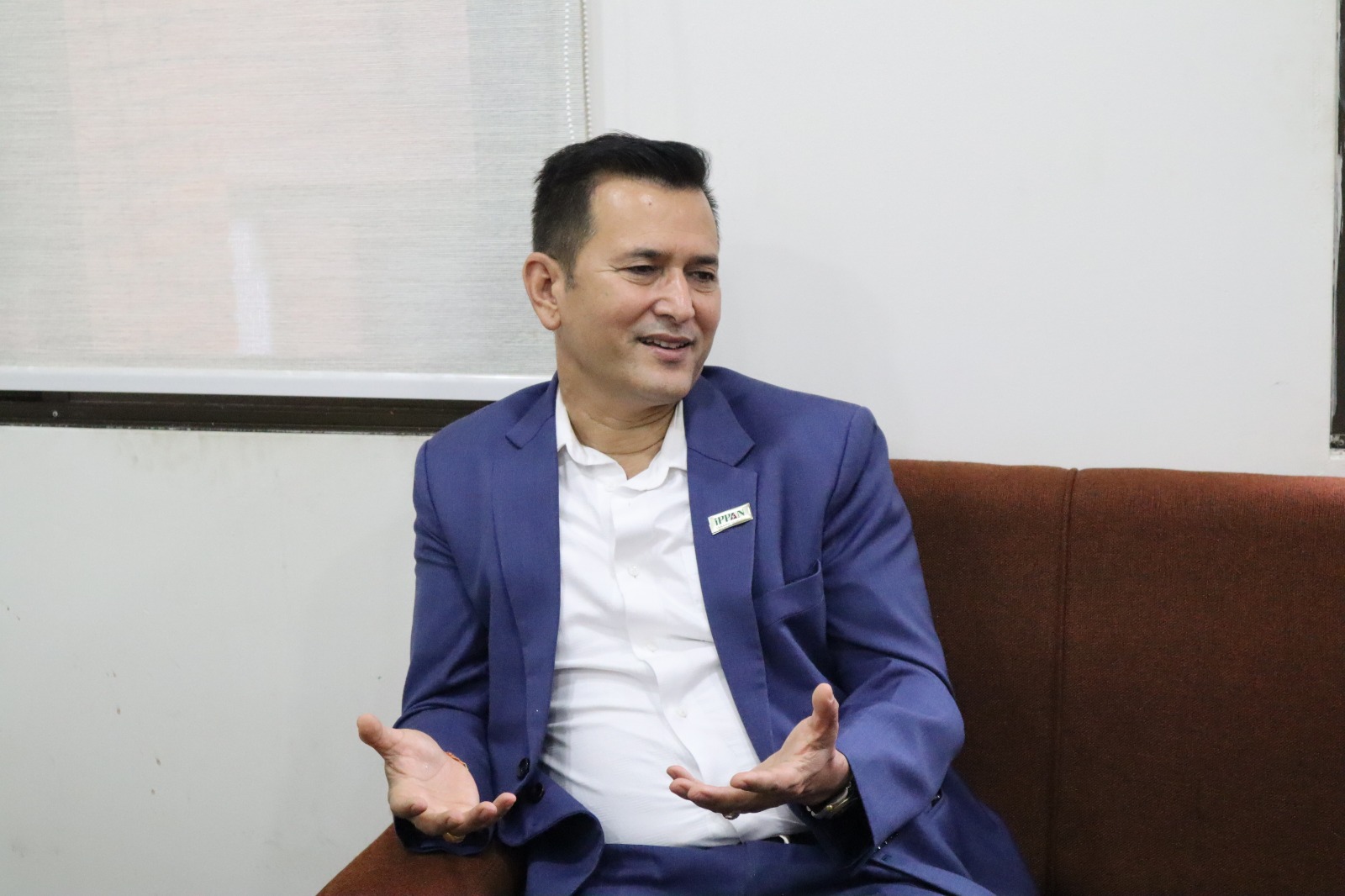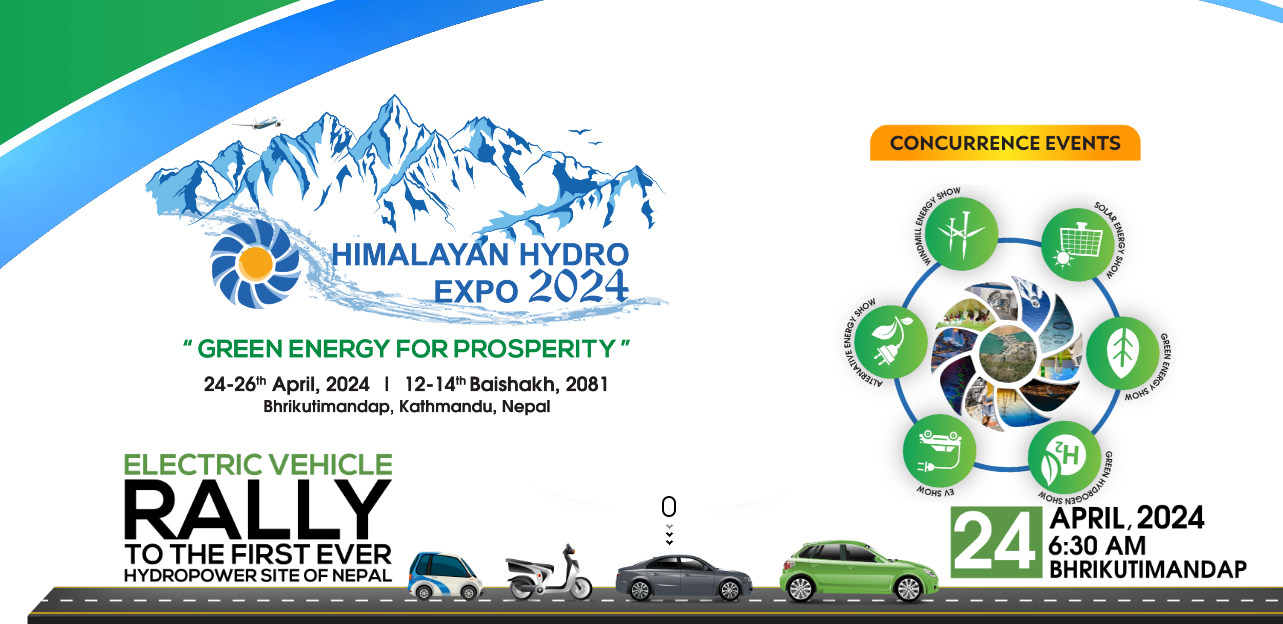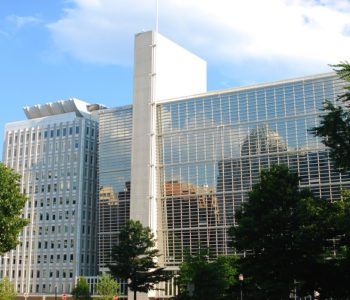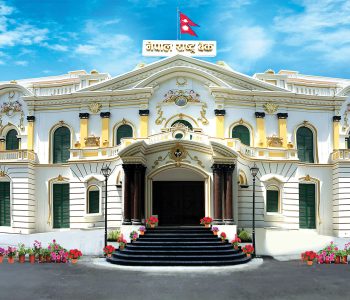Exploring the significance of ‘Green Energy for Prosperity’ theme: An interview with IPPAN President Ganesh Karki

KATHMANDU: Independent Power Producers’ Association, Nepal (IPPAN) will host the Himalayan Hydro Expo 2024 from April 24-26 in Kathmandu. The event aims to spotlight Nepal’s hydropower potential, investment opportunities, green hydrogen advancements, and technology transfer for both domestic and international investors, stakeholders, bankers, and lenders. IPPAN President Ganesh Karki discussed the significance of the expo and beyond in an interview with Fiscal Nepal, highlighting its role in enhancing Nepal’s hydropower prospects on the global stage.
Thank you for taking the time to speak with us. With just a few days remaining until the Himalayan Hydro Expo 2024, could you share some insights into the upcoming Himalayan Hydro Expo 2024?
The Himalayan Hydro Expo 2024 is poised to be a pivotal platform for showcasing sustainable energy solutions under the theme “Green Energy for Prosperity.” This event holds immense importance as it brings together various stakeholders to discuss energy development, investment opportunities, and social impact.
This year’s expo marks a significant shift towards clean and green energy. The global focus has pivoted towards sustainability, making it a prime opportunity for Nepal’s hydropower sector. With favorable policies from both Nepal and India, the expo aims to attract substantial investment and showcase Nepal as a lucrative destination.
How does this year’s expo differ from previous editions?
The landscape has evolved. We’re not just discussing hydropower; we’re actively exploring avenues for selling clean energy. The demand has changed, and we’re aligning our strategies accordingly to meet the evolving needs of the market.
What role does foreign investment play in Nepal’s energy sector?
Foreign investment is crucial for driving innovation and development in clean energy. With uncertainties in other regions, Nepal emerges as a safe haven for investors seeking stable returns. By leveraging foreign investment and expertise, we can propel Nepal towards a sustainable energy future while creating employment opportunities.
How do you envision the collaboration between stakeholders for the development of clean energy?
Collaboration is key. We need to bring together banks, technology providers, insurers, and infrastructure developers to create a conducive environment for clean energy projects. By fostering a collaborative ecosystem, we can expedite the development of Nepal’s energy infrastructure and unlock its full potential.
What do you hope to achieve through the expo, particularly in terms of fostering collaboration and innovation in the energy sector?
Our primary goal with the expo is to facilitate dialogue and collaboration among governmental and non-governmental bodies, investors, universities, and other stakeholders. By creating a space for sharing ideas and exploring partnerships, we aim to drive innovation and progress in the energy sector, ultimately contributing to Nepal’s sustainable development goals.
We anticipate significant investment pledges and partnerships that will drive the growth of Nepal’s clean energy sector. By harnessing the collective efforts and ideas of stakeholders, we can pave the way for a sustainable and prosperous future for Nepal.

Can you provide us with an overview of the evolution of Nepal’s hydropower sector and the pivotal role played by the private sector?
Nepal’s journey in harnessing its hydropower potential spans over a century, but significant strides was made with the active involvement of the private sector. In 2057 BS, the country witnessed a watershed moment as the first privately invested hydropower project commenced operations.
This event marked a paradigm shift, signaling the beginning of a new era in Nepal’s energy landscape. Since then, the private sector has been at the forefront of driving the sector’s growth, surpassing the government’s cumulative production within a span of just 23 years. Today, the private sector contributes substantially to Nepal’s hydroelectric capacity, highlighting its pivotal role in the nation’s energy trajectory.
The numbers certainly speak volumes about the private sector’s contribution. Can you elaborate on the scale of private sector involvement in Nepal’s hydropower sector?
Certainly. Presently, the private sector is actively engaged in the development of over 169 hydropower projects, with 91 of these projects listed on the Nepal Stock Exchange. These projects have attracted investments from more than four million individuals, underscoring widespread participation and confidence in the sector.
Furthermore, the private sector’s commitment is reflected in the multitude of projects currently under construction, with a combined capacity of over 3,200 MW. Additionally, projects totaling 3,500 MW are in the final stages of financial closure, poised to further bolster Nepal’s hydroelectric capacity in the near future.
It’s evident that the private sector has been driving significant growth in Nepal’s hydropower sector. However, what challenges does the sector currently face, and how can they be addressed?
Despite the remarkable progress, the private sector encounters several challenges that impede the sector’s growth trajectory. One pressing issue is the delay in renewing Power Purchase Agreements (PPAs) by the government, which undermines investor confidence and stalls project development. Furthermore, cumbersome regulatory procedures, legal hurdles, and a lack of investment security deter potential investors, hindering the sector’s expansion.
To address these challenges, the government must prioritize creating an investment-friendly environment and streamlining regulatory processes to facilitate project development. Additionally, ensuring the timely renewal of PPAs and providing investment security are crucial steps to unlock the sector’s full potential and attract further private investment.
That’s insightful. Could you shed some light on the recent agreement between Nepal and India regarding electricity trade, and what it means for the private sector?
The recent agreement between Nepal and India to export 10,000 MW of electricity over the next decade presents a significant opportunity for the private sector. This agreement underscores India’s willingness to import power produced by Nepali investors, providing a lucrative market for Nepal’s hydropower projects.
However, for the private sector to capitalize on this opportunity, it is imperative for the government to ensure the resumption of Power Purchase Agreements (PPAs) and create a conducive environment for private investment in hydropower projects. Collaborative efforts between the government and the private sector are essential to leverage this agreement and drive the sector’s growth, ultimately benefiting both nations.

Given the immense potential of Nepal’s hydropower sector, what measures do you propose to expedite its development and achieve the country’s energy goals?
To expedite hydropower development and achieve Nepal’s energy targets, urgent reforms and interventions are needed. Firstly, the government must address legal hurdles and streamline regulatory processes to facilitate project development. Timely renewal of Power Purchase Agreements (PPAs) and providing investment security are imperative to instill confidence among investors and attract further private investment.
Secondly, the government should declare a ‘state of emergency’ in the power sector to expedite project implementation and ensure timely completion. Additionally, collaborative efforts between the government and the private sector are vital to harnessing Nepal’s immense hydropower potential and driving the nation towards energy self-sufficiency.
Your insights are invaluable, Could you elaborate on the role of solar energy in Nepal’s energy landscape, and how it complements hydropower?
While hydropower remains the cornerstone of Nepal’s energy sector, solar energy is emerging as a complementary source of energy. In recent years, there has been increased focus on solar energy, with several solar projects coming online and more in the pipeline.
Responding to the government’s emphasis on solar energy, a dozen solar projects with a combined capacity of 100 MW have commenced operations in the last five years, with additional projects totaling 1,000 MW under construction.
The integration of solar energy diversifies Nepal’s energy mix, enhancing energy security and resilience. However, to fully leverage the potential of solar energy, it is imperative for the government to create an enabling environment for private investment in solar projects and streamline regulatory processes.
Thank you for your comprehensive insights, Before we conclude, do you have any final thoughts or messages you would like to share?
As we navigate the complexities of Nepal’s energy landscape, collaboration and partnership between the government and the private sector are paramount. By working together, we can overcome challenges, unlock opportunities, and propel Nepal towards a sustainable energy future.
It is imperative for the government to prioritize the development of the hydropower sector, address regulatory bottlenecks, and create an investment-friendly environment to attract further private investment. Together, we can harness Nepal’s immense hydropower potential and pave the way for a prosperous and sustainable future.













Facebook Comment